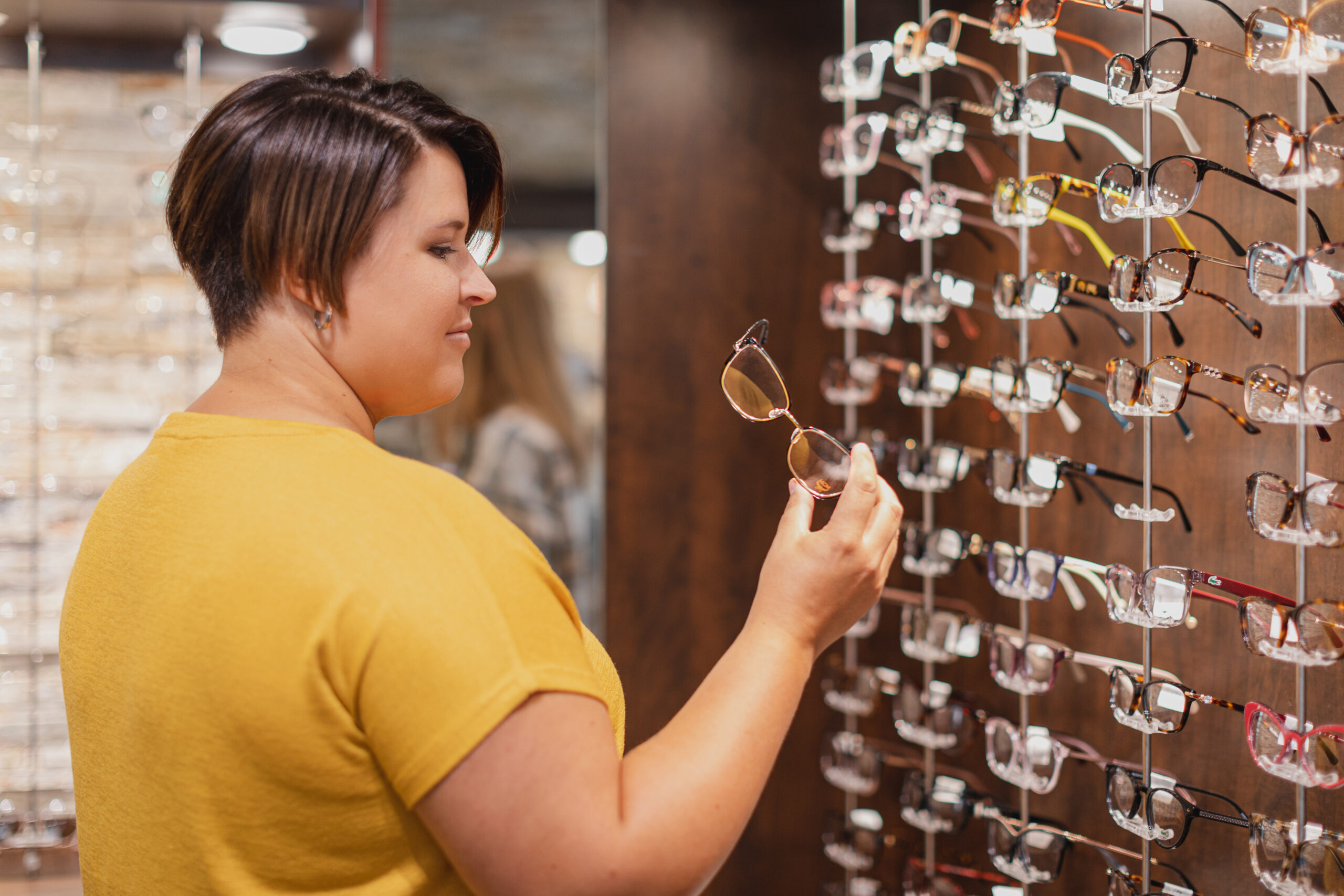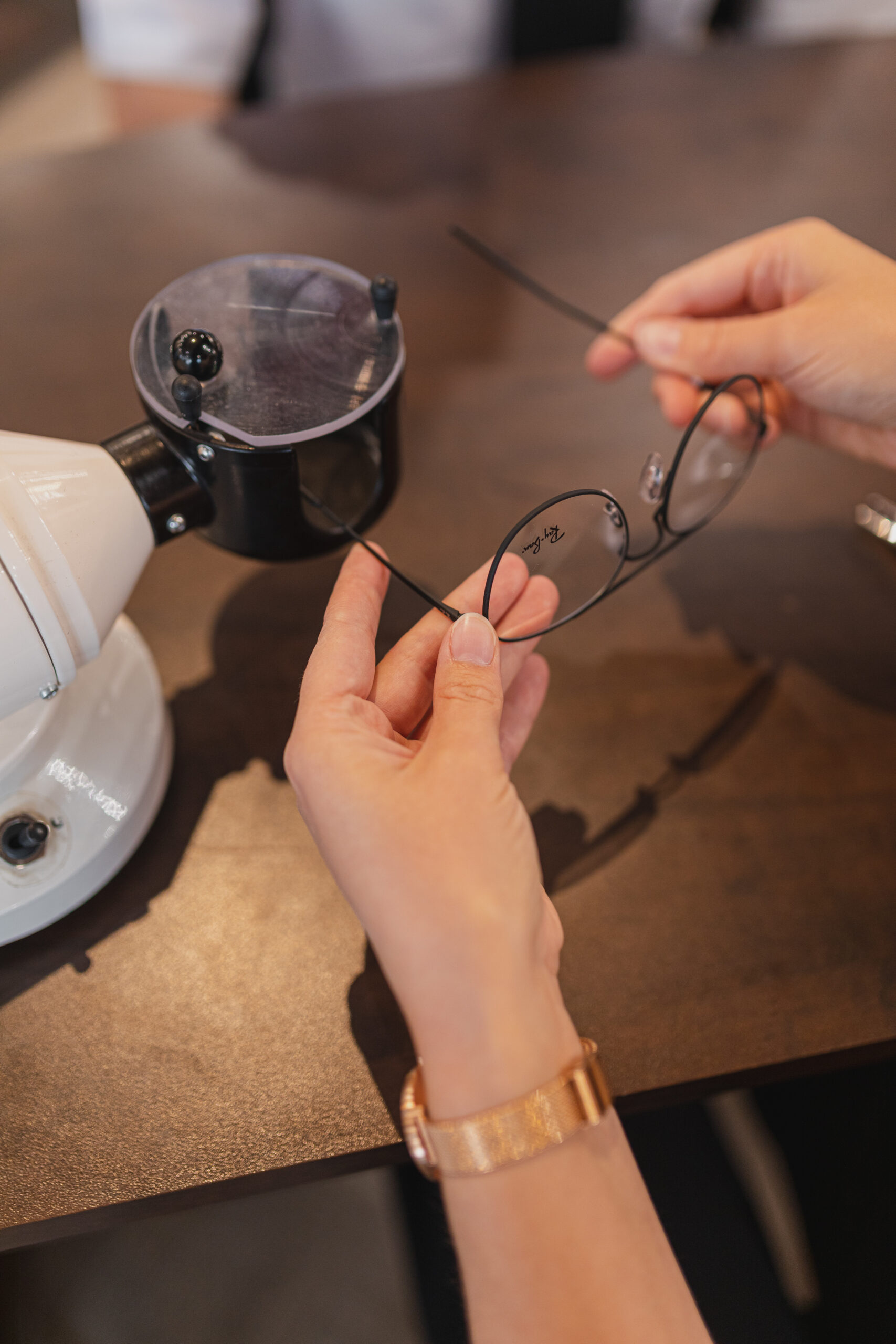Don’t be spooked by your eye prescription: A journey to visual confidence
October 17, 2023

In a world where your visual clarity is so important, people will rely on eyeglasses and contact lenses to help them with their eyesight. However, most of us feel confused by the complex jargon and terms used when receiving an eye prescription. Fear not ! We will take a closer look at the world of eye prescriptions, help you understand the basic terms, and ultimately overcome the fear of prescriptions, leading you to more visual confidence.

The components that make up an eye prescription
The first step in overcoming your fear of your prescription is understanding it. Being the roadmap to your eye health, it is composed of several abbreviations and numbers that may not mean much to you, therefore inducing panic at first sight. Let us break it all down for you so you have a better understanding of each.
- OD and OS: These abbreviations reference your right eye (ocular dexter) and your left eye (ocular sinister), and are usually accompanied by a number. This indicates to the optometrist how strong the prescription should be in each eye.
- S or SPH: Also referred to as sphere, this indicates the power of each lens needed to correct the vision in each eye. The higher the number, the stronger the lens. The + or - sign refers to farsightedness and nearsightedness respectively.
- CYL: This abbreviation refers to cylinder, which is a measure of your astigmatism, if present. A higher number here also indicates a higher prescription with a more severe case of astigmatism.
- Axis: The angle of the astigmatism correction is referenced by this measurement. Astigmatism is a result of the shape of your cornea, and this measure describes how the cornea is actually shaped. The axis usually ranges between 0 and 180 degrees.
- Add: Should this appear on your prescription, it means that extra correction is needed for presbyopia, a condition for close up vision that usually targets people over the age of 40.
- PD: This refers to pupillary distance, a measurement that looks at the space between your pupils. This is more on the aesthetic side but it does help evaluate how a pair of glasses will fit on the frame of your face.

What does it all mean for your vision
Now that we have deciphered the abbreviations that are set to appear on your eye prescription, let’s see what this all means for your eye health.
- Nearsightedness: Also known as myopia, if your sphere value is accompanied by a - sign, you suffer from nearsightedness. This means that you have a difficulty seeing things from afar. As mentioned, the higher the number here, the more nearsighted you are.
- Farsightedness: On the other hand, if your sphere value is accompanied by a + sign, you suffer from hyperopia or farsightedness. In this case, your vision is not so good with objects up close.
- Astigmatism: If CYL and an accompanying number are present in your eye prescription, then you have astigmatism. Due to a misshapen cornea, astigmatism causes blurred vision.
- Presbyopia: Indicated by the “add” value, this condition refers to an inability to focus on things up close, led on by age. In this case, a lens is created to help you with your vision and everyday tasks.

Care for your eyes
Now that you know what your prescription is trying to tell you about your eyes, you can take proactive steps toward the maintenance of a healthy eyesight:
- The first thing is to schedule regular eye exams with your optometrist. This is where you’re able to discuss your eye health with your eyecare professional and get all your questions answered.
- Like everything else, a healthy lifestyle is very beneficial to the eyes. A diet right in carotenes and omegas helps promote a healthy eyesight.
- Most of us spend too much time in front of a screen. Taking breaks and applying the 20-20-20 rule is beneficial: every 20 minutes, shift your focus to something 20 feet away for at least 20 seconds.
- UV protection is crucial to maintaining your eye health and having the right sunglasses is key.
When it comes to your eye prescription, there is no such thing as a bad one. When you take the right measures, and are armed with the knowledge about your eye prescription, there is no need to be spooked or worried. With the right eyecare professionals, like the ones at LE LUNETIER, you can embrace your eye prescription and embark on a journey towards optimal eye health.